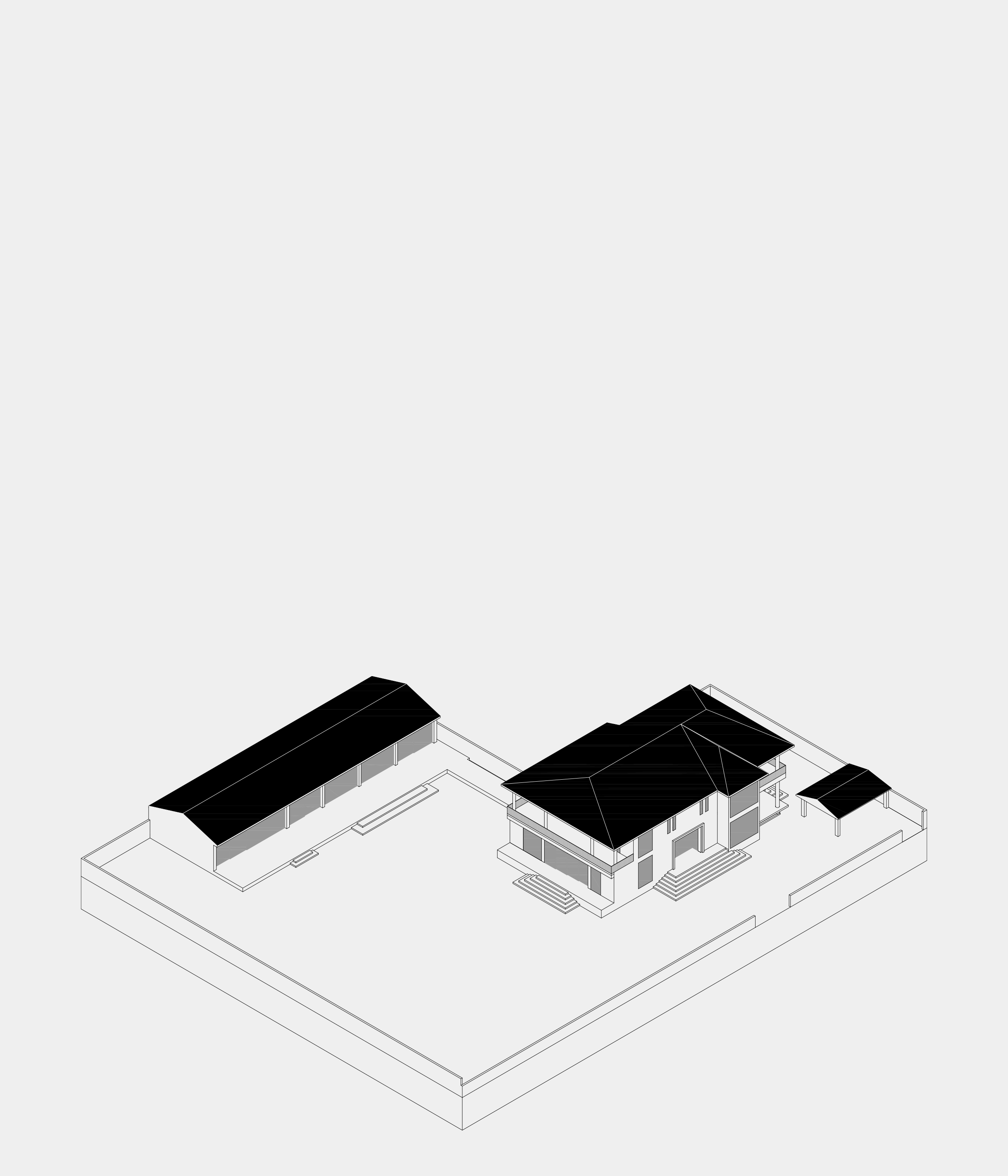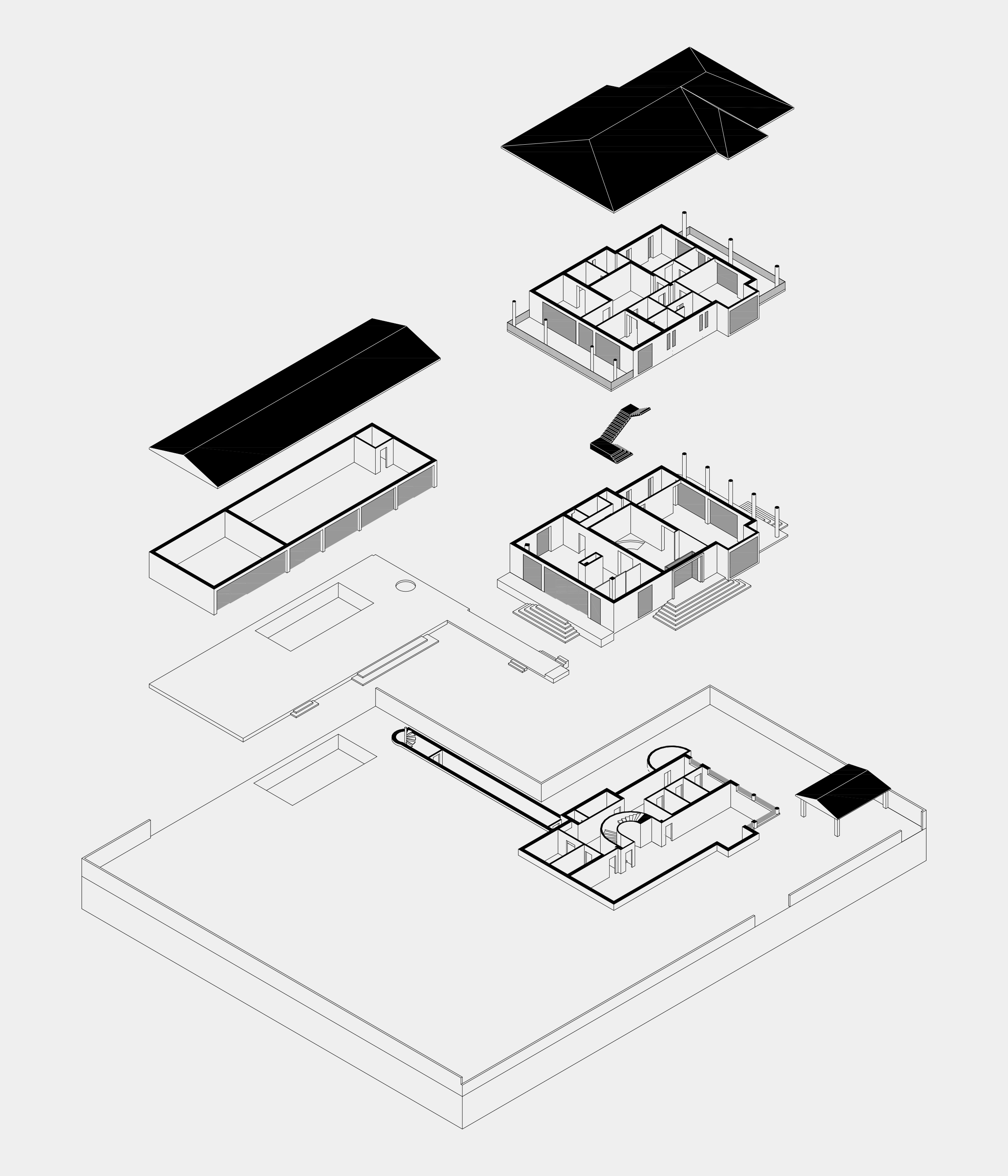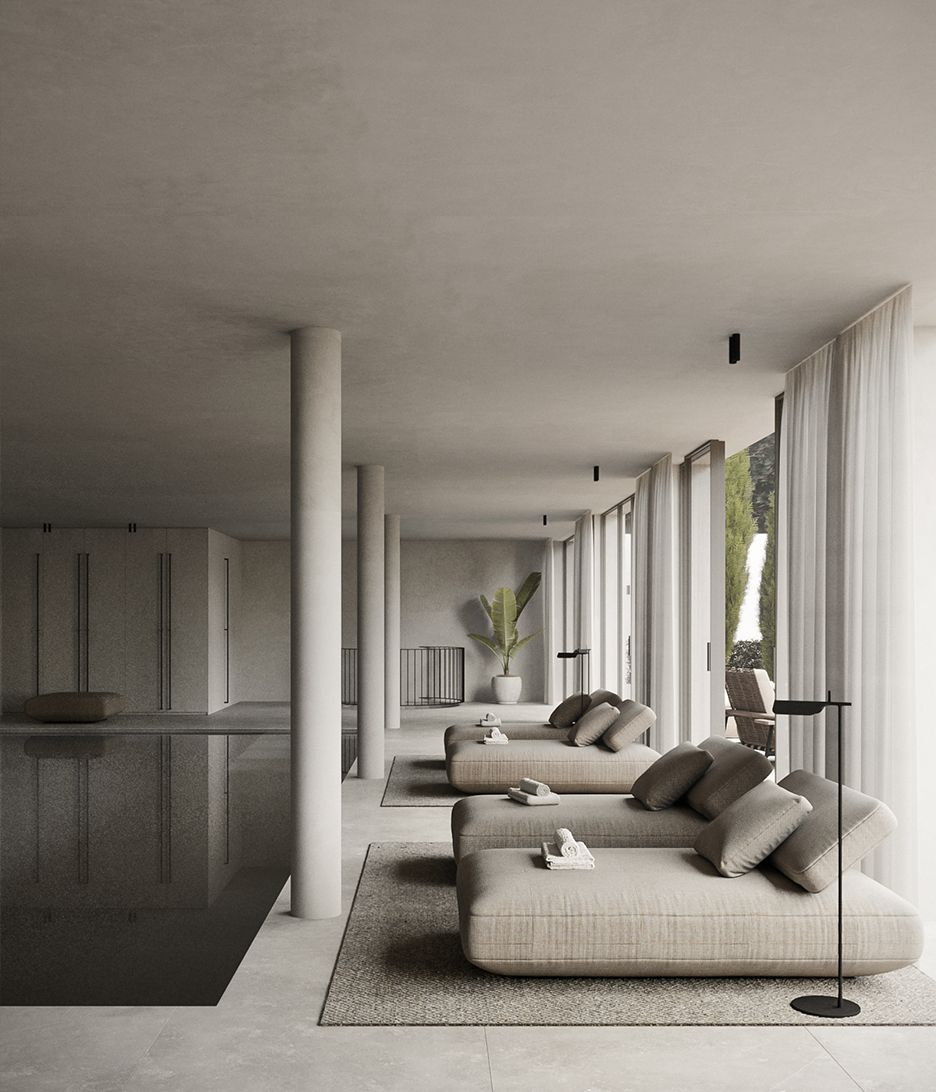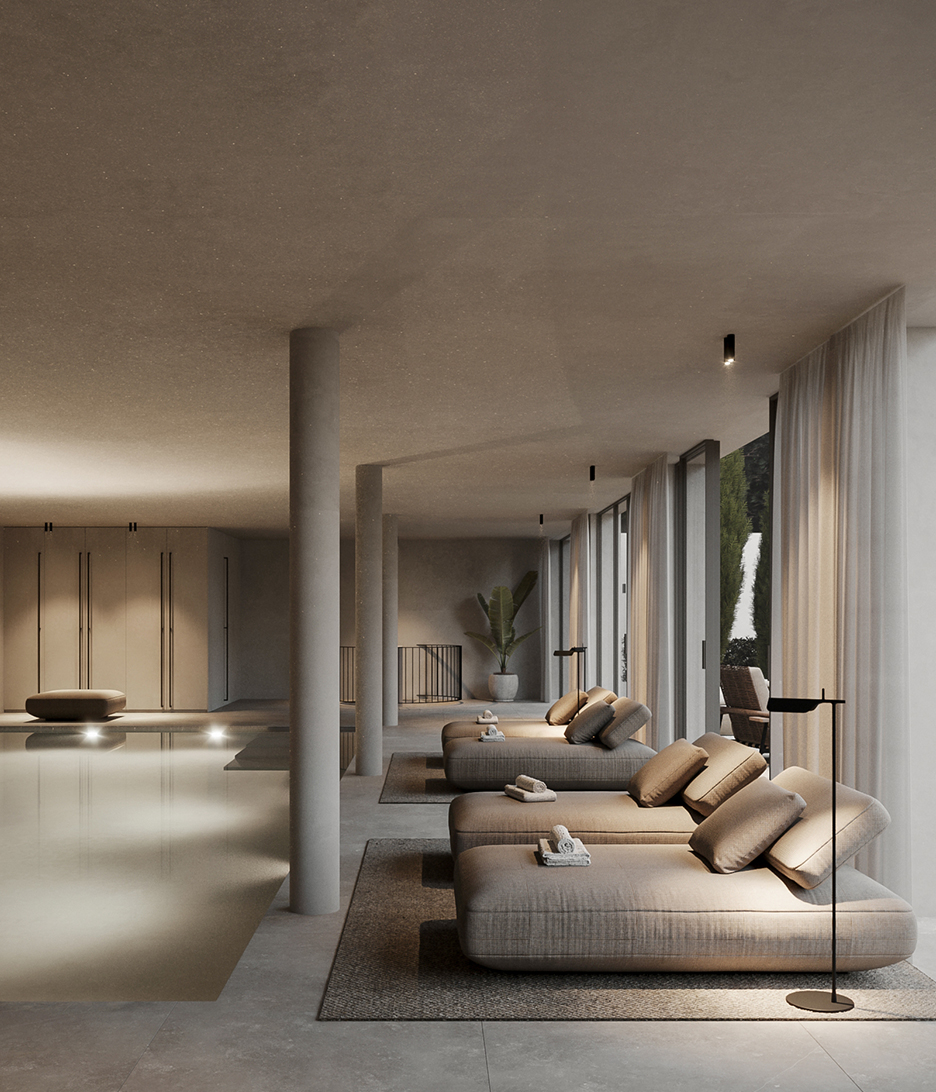TOWN HOUSE
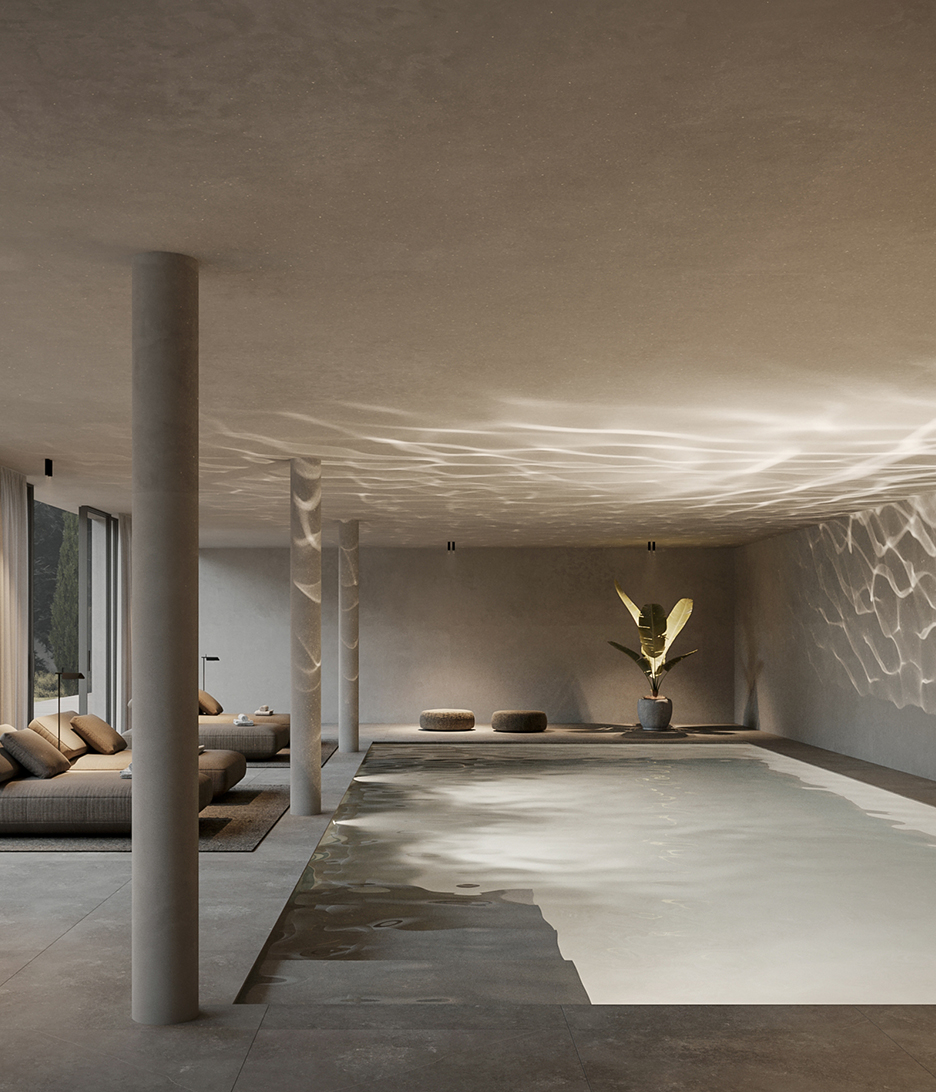
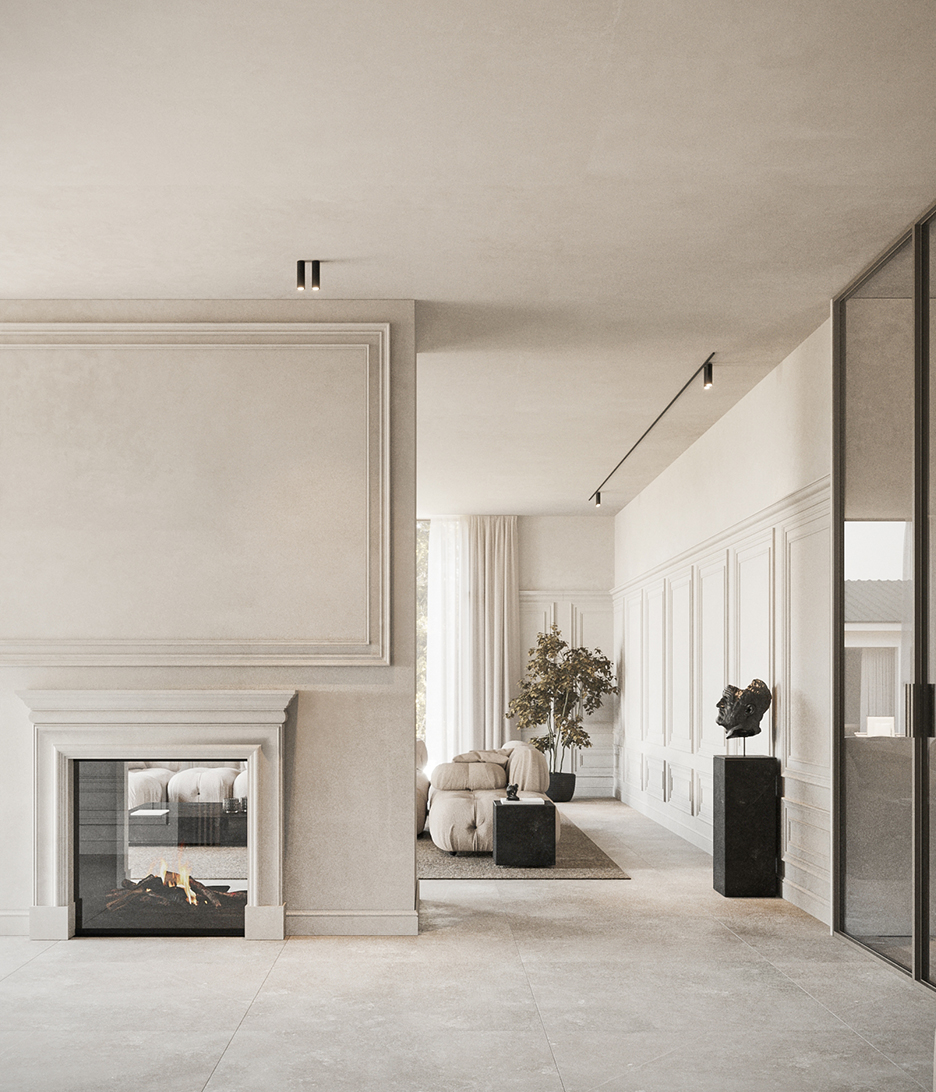


One of the challenges was conceptualizing the functionality of the house and lifestyle towards minimalism as illustrated, but also bringing it closer to a somewhat more classic style as desired by the client.
It used to be difficult to imagine the possibility of doing remote projects such as this one in the past, but thanks to new technologies, we could work on this project closely with our client.
In this project, the client owned a property he started building some time ago. He stopped the project because it did not meet his expectations and it remained semi-built for a few years.
Our assignment was to reimagine the home, while still preserving the structural part of the house. The client approached our studio looking for a different design approach so he could reactivate the project. After many meetings, project analysis, and the evaluation of the client’s requirements, we decided that we could focus on the service as a design concept to analyze if there could be any possibility of breathing new life into the project without the need to demolish part of what was built.
The house’s functionality was quite well resolved as it distributed its 790sqm on three floors: the day area was on the ground floor, the night area on the first floor, and the basement which had spaces for a spa, games, or for service staff. During our initial analysis, we sensed that the house would not undergo any substantial changes at the distribution level. However, we could focus our effort and resources on from the perspective of achieving better design and style as a solution.
As in all our projects, we perform an exercise of exploring and comprehending what elements we find before the project starts and whether it makes sense to use them as a fundamental part of the design approach.
As in all our projects, we perform an exercise of exploring and comprehending what elements we find before the project starts and whether it makes sense to use them as a fundamental part of the design approach.
Our first challenge was understanding the reason for the building of the home as it was, through understanding the client’s requirements, and finding out what moved them to design such a characteristic house. We wanted to assess the possibility of following the same fundamentals and being respectful of the current design or suggesting a new design approach.
We analyzed the current house’s style and interpreted that the design was influenced by the ‘Modern style’ movement - Art Noveau. This design style influenced the city of Tbilisi at the beginning of the 20th century and today, it is still visible in the residential buildings of the oldest part of the city.
After several meetings with the client and different design evaluations, we decided to redirect the entire project to a more contemporary solution without reinterpretations or the impact of the past. The client enjoys social life and gatherings and wanted a house open to the garden as well as contemporized functionality.
Among all the client’s requirements, which turned out to be a very influential element when developing the entire project, was that they wanted to connect the house with the covered outdoor pool area without needing to pass through the patio or the exterior.
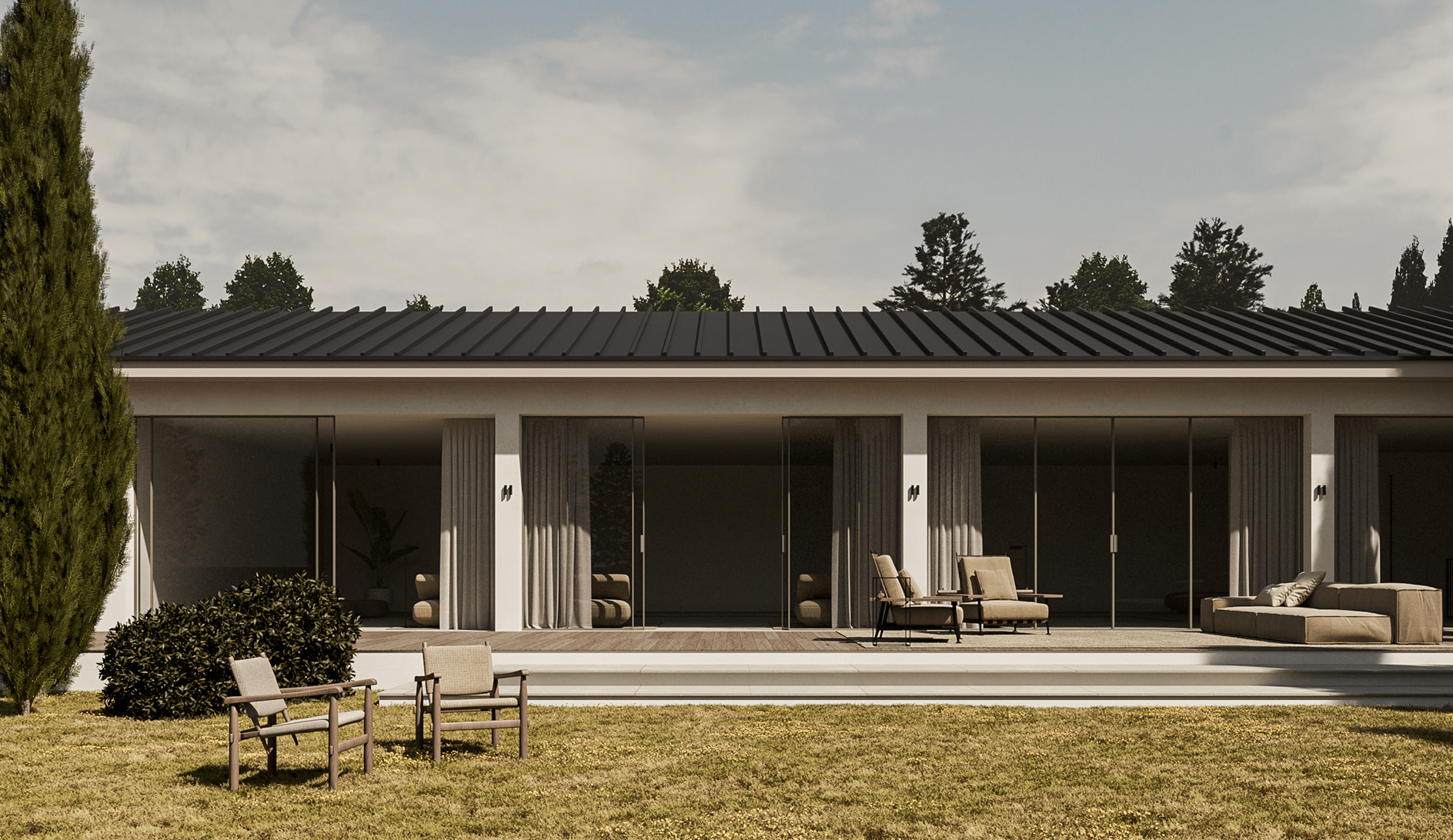
A first attempt was made to maintain what was built to minimize the impact of the reinterpretation of the entire house with a new project and space functionality.
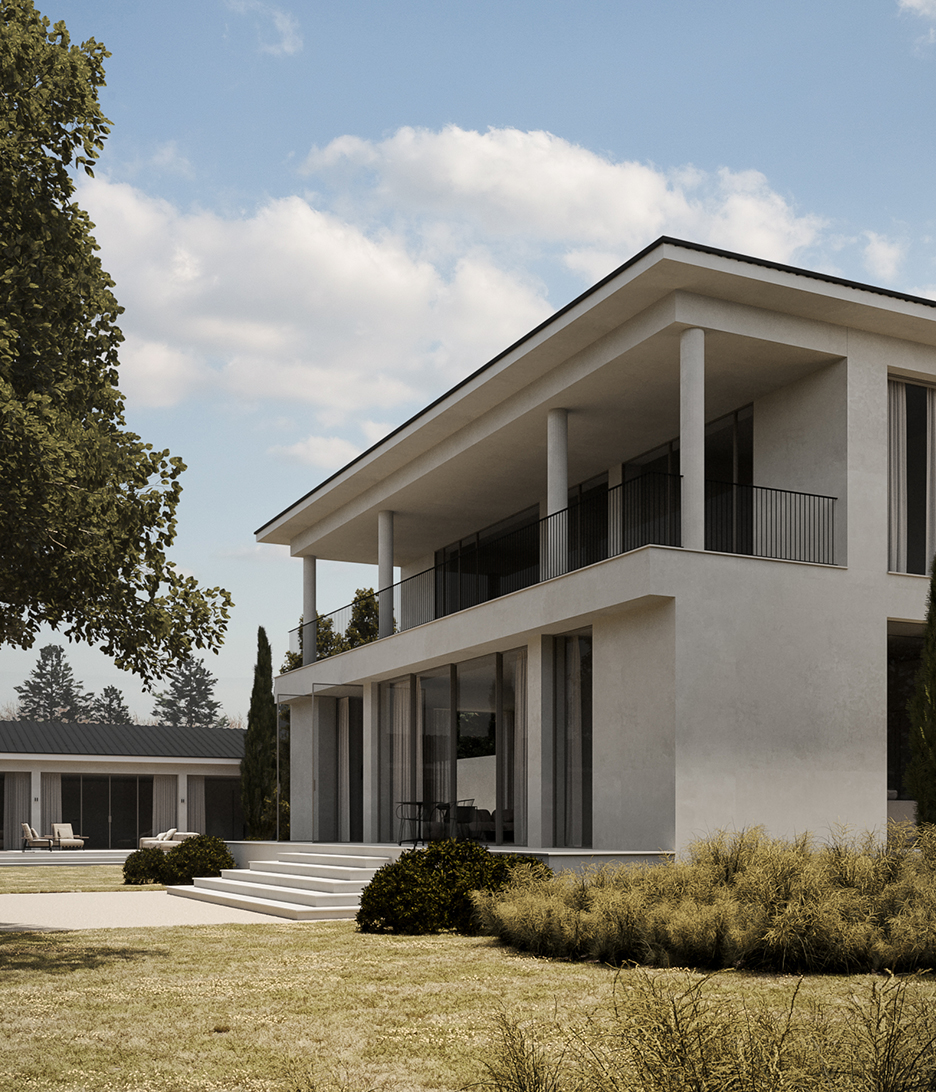
A lot of time was spent on the initial part of the project to understand, interpret and evaluate what had been built. We wanted to minimize the impact of changing the functionality and volume of a constructed building. To carry out this exercise, we kept almost the entire structure and only projected new circulations and connections towards the outside areas of the house.
We believed in maintaining a modern architectural style and providing the project with more lively contemporary details, keeping in mind construction resources.
After evaluations, discussions of our client’s impressions, and analysis of their reason for the first solution presented, we decided to reorient the entire project and get rid of what had been built and started from scratch. Only the structural part of the house was to be preserved.
Keeping only the structure of pillars made it easier to create the house’s layout and conceptualize the space’s new functionality.
We focused on creating a logical circulation layout around a central staircase. Through this, we managed to separate all the spaces for privacy.
We focused on creating a logical circulation layout around a central staircase. Through this, we managed to separate all the spaces for privacy.
One of the new strategies was to relocate the house’s main entrance and simultaneously attain larger, free spaces designed to accommodate groups of people. One of the client’s main requirements was that it was to be a house to hold gatherings, parties or banquets with a large number of guests.
The primary action we saw based on the new functionality of the house was to transform the spaces according to their activity. Above all, the privacy of the most intimate areas of the house would not be exposed to the guests.
The house was distributed in a logical way over three floors. The basement, partially underground, allows for placing spaces where natural light is not essential; it uses artificial light to create different environments. It’s a perfect space to place a cinema or spa. The garden plan was apt for placing all the activities of the day and locating the zones based on the connection with the exterior and the house’s orientation. Finally, the first floor, which is the most private, was the perfect place for the rooms.
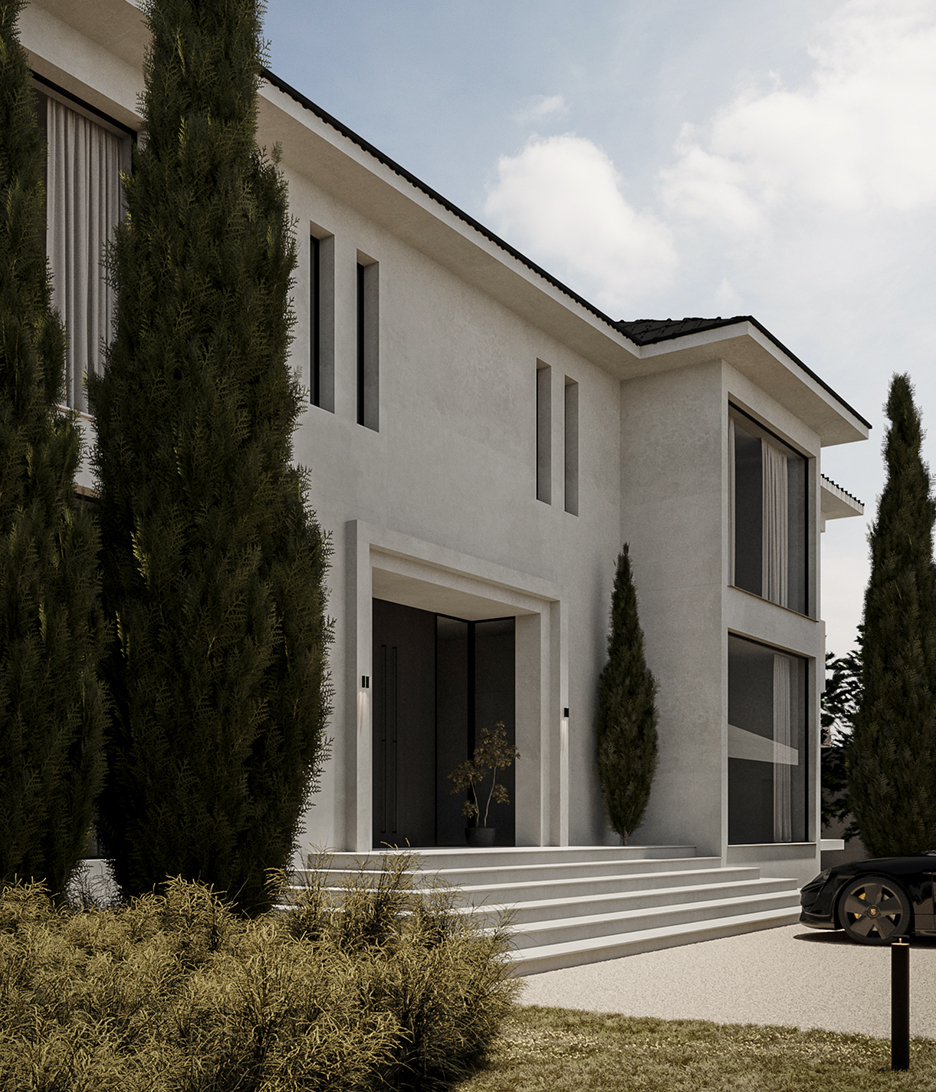
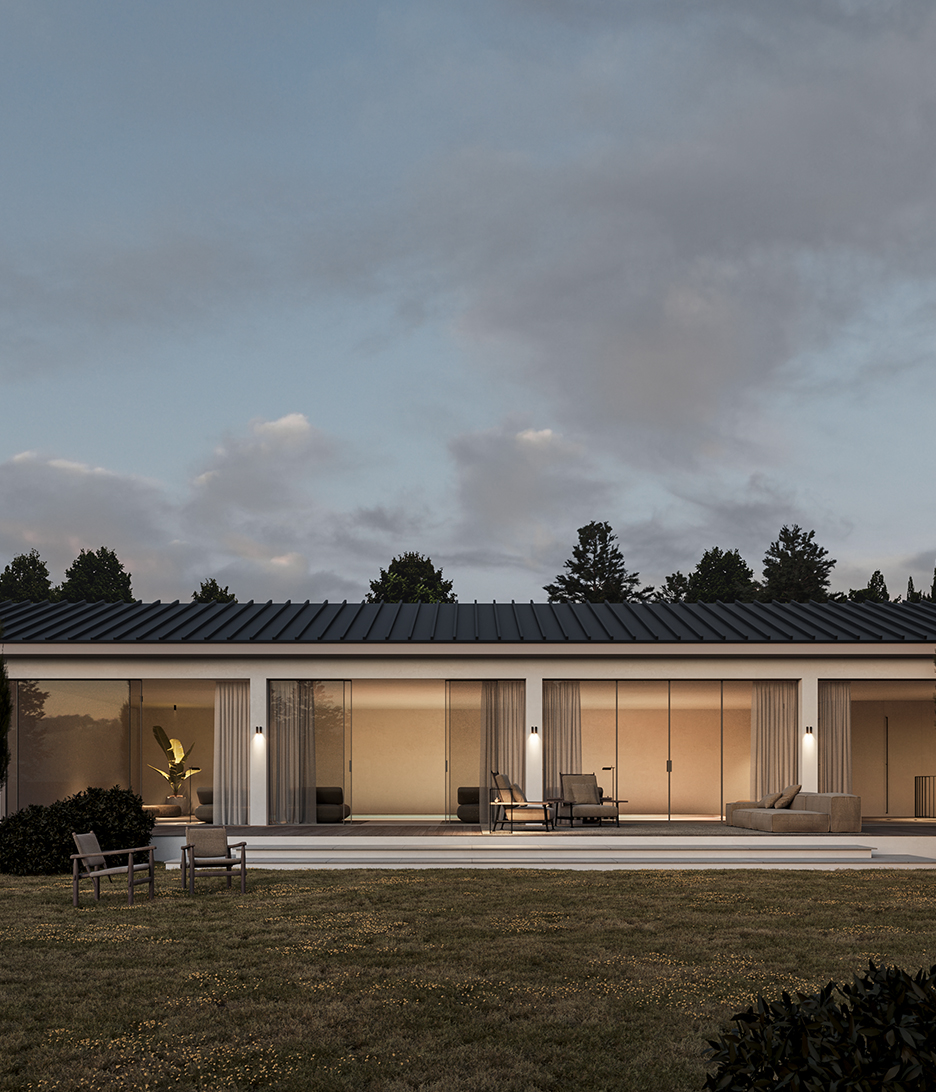


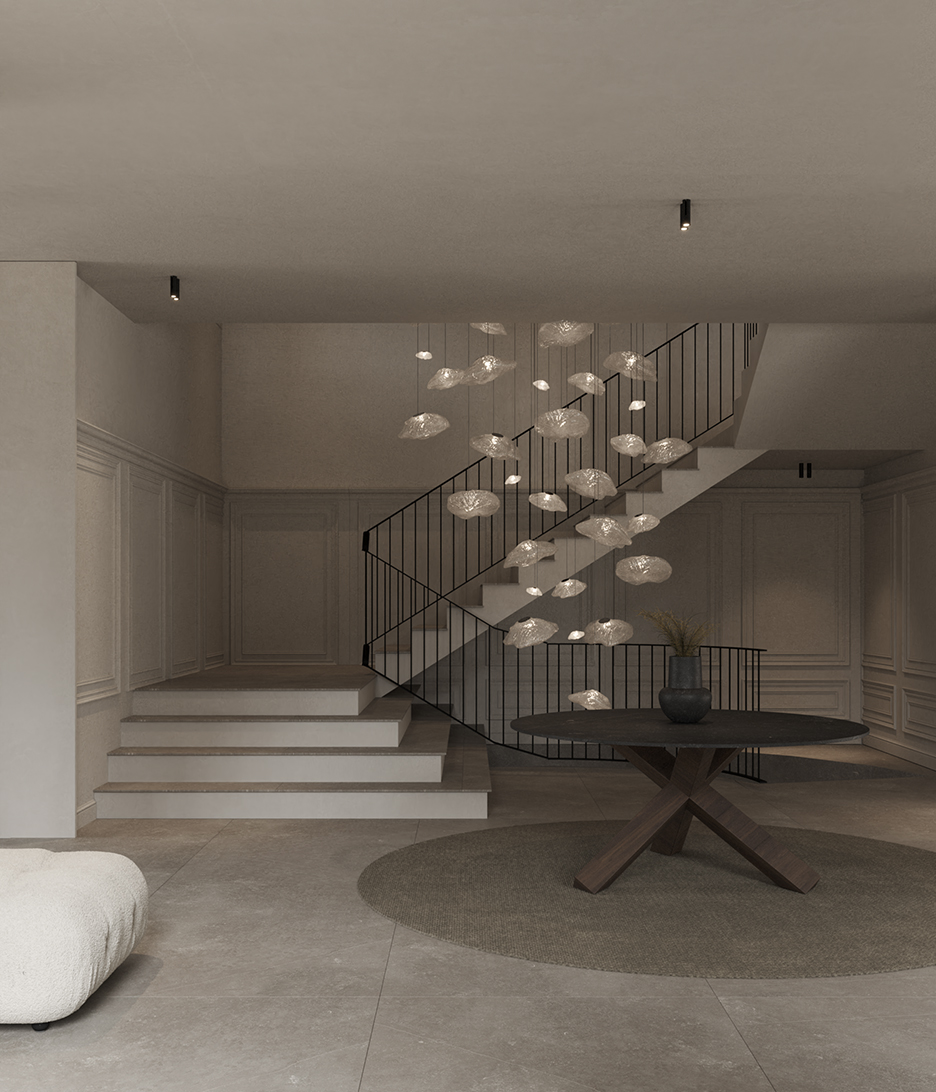
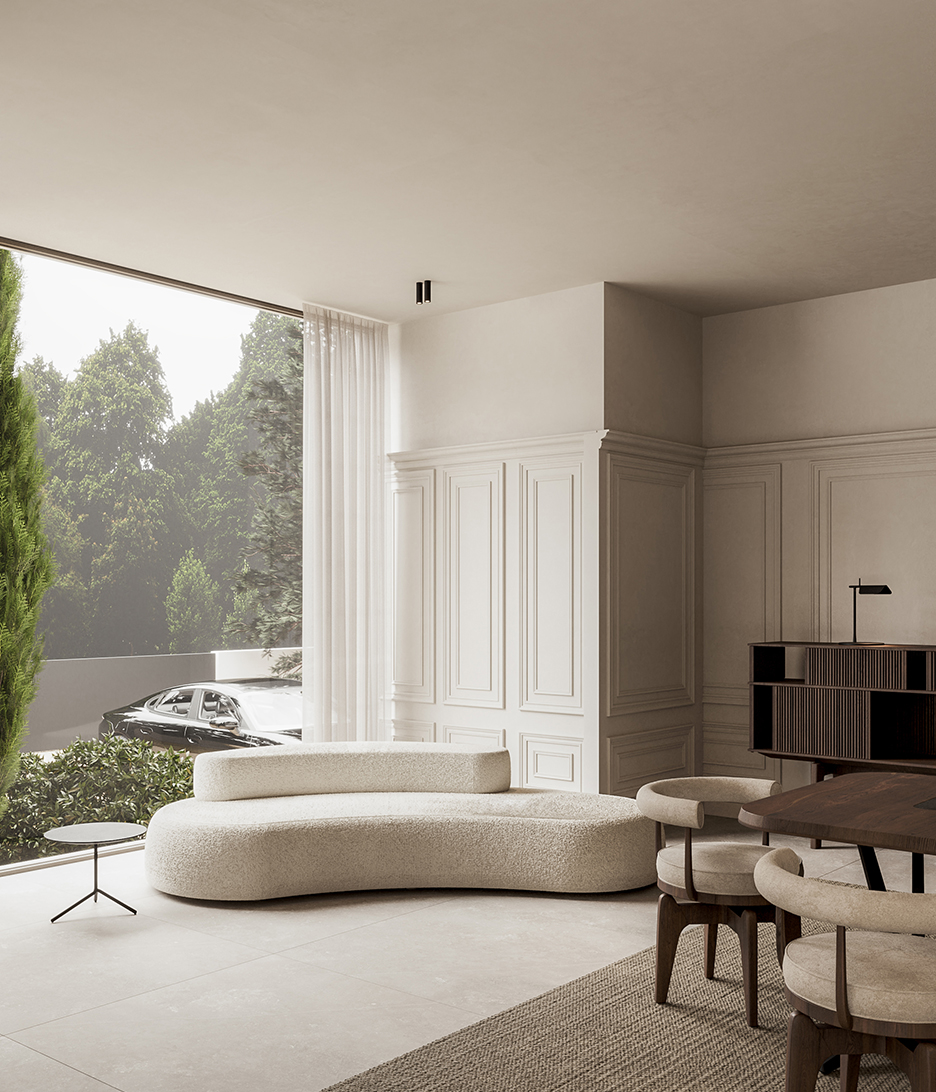


The house is distributed according to the privacy required of the different areas. The main entrance separates the areas from less to more privacy.
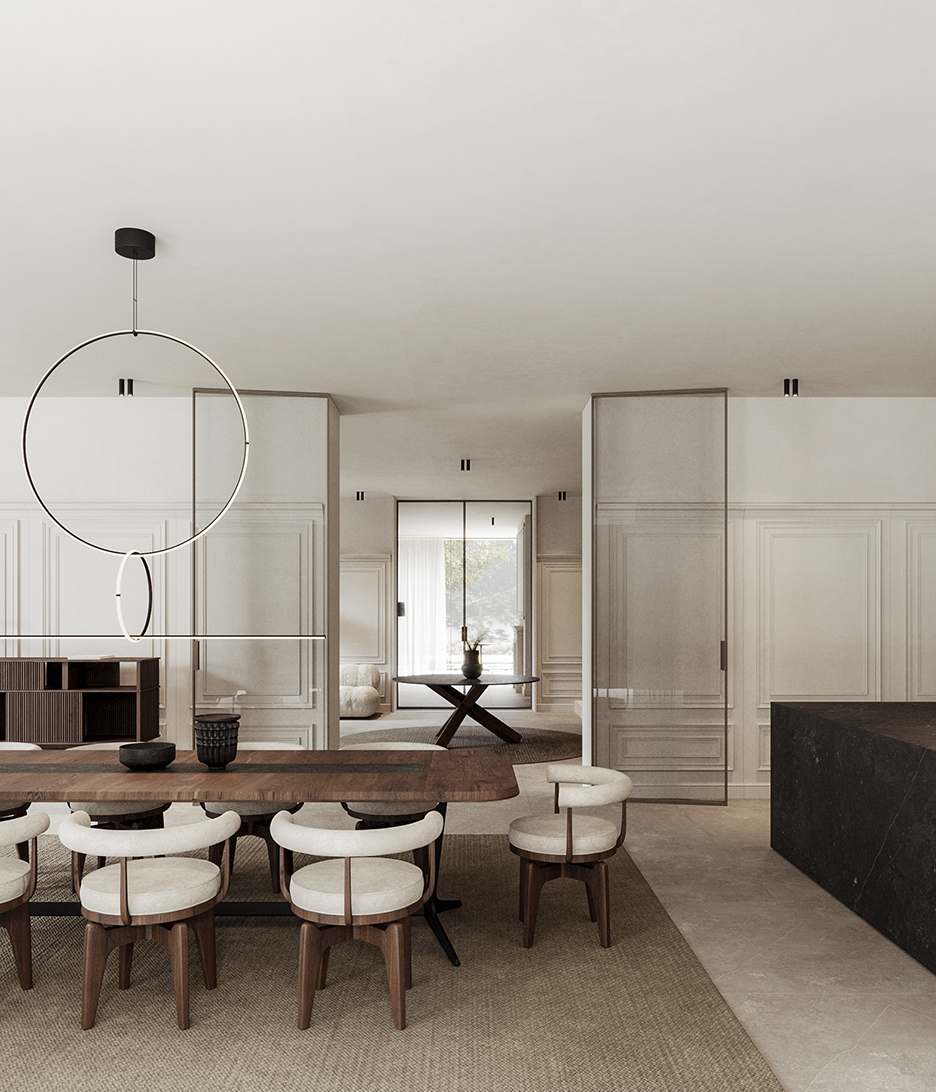
The entire interior distribution of the house was planned right from the beginning of the project.
The only thing missing was to reinterpret the day area and how it had to create a dialogue with the exterior space. The outdoor garden area was prioritized as a space to enjoy the outdoor life, gatherings with friends, and social events. For this reason, the day area is divided into four large spaces. The first is the formal area, which has direct contact with the entire outdoor space and is characterized by a large living area that allows us to accommodate a large group of people.
The transit areas and corridors are reinterpreted as part of the experience and work well as spaces for exhibitions or standing meeting areas.
The other prominent day area is the dining room and kitchen area. As part of the country’s culture, food is one of the main axes in gatherings with family, friends, or social encounters. For this reason, it was essential to consider the kitchen as a meeting place or a show kitchen to experience while the dishes were prepared. We believe a meeting area where you look for immersion, and the kitchen acts as the center of the experience.
We proposed an orderly sequence of spaces by permanently preserving the perspective and visual toward the outside of the house to assess the area’s spaciousness.
We proposed an orderly sequence of spaces by permanently preserving the perspective and visual toward the outside of the house to assess the area’s spaciousness.
The kitchen space was divided into two. On one side, we have the kitchen that represents a meeting space, designed to be seen as a complete dining room. It represents a more formal and orderly solution. On the other side, hidden from the dining area, we have a service kitchen. This space allows for more heavy-duty cooking and for the service staff.
On the opposite side of the kitchen and dining room, we have the most formal area of the house. It is a space designed for meetings, parties, and other social events. This space has direct communication with the garden. Thanks to a moderate climate for most of the year, we can imagine a direct connection between the interior and exterior space. This allows us to understand the area as one and in parallel, places a larger capacity for guests.
A hidden corridor connects the formal area with the service kitchen and the restroom. In this way, we can maintain the privacy of the different spaces. This corridor also has access to the garden designed to serve the entire outdoor dining and living area.
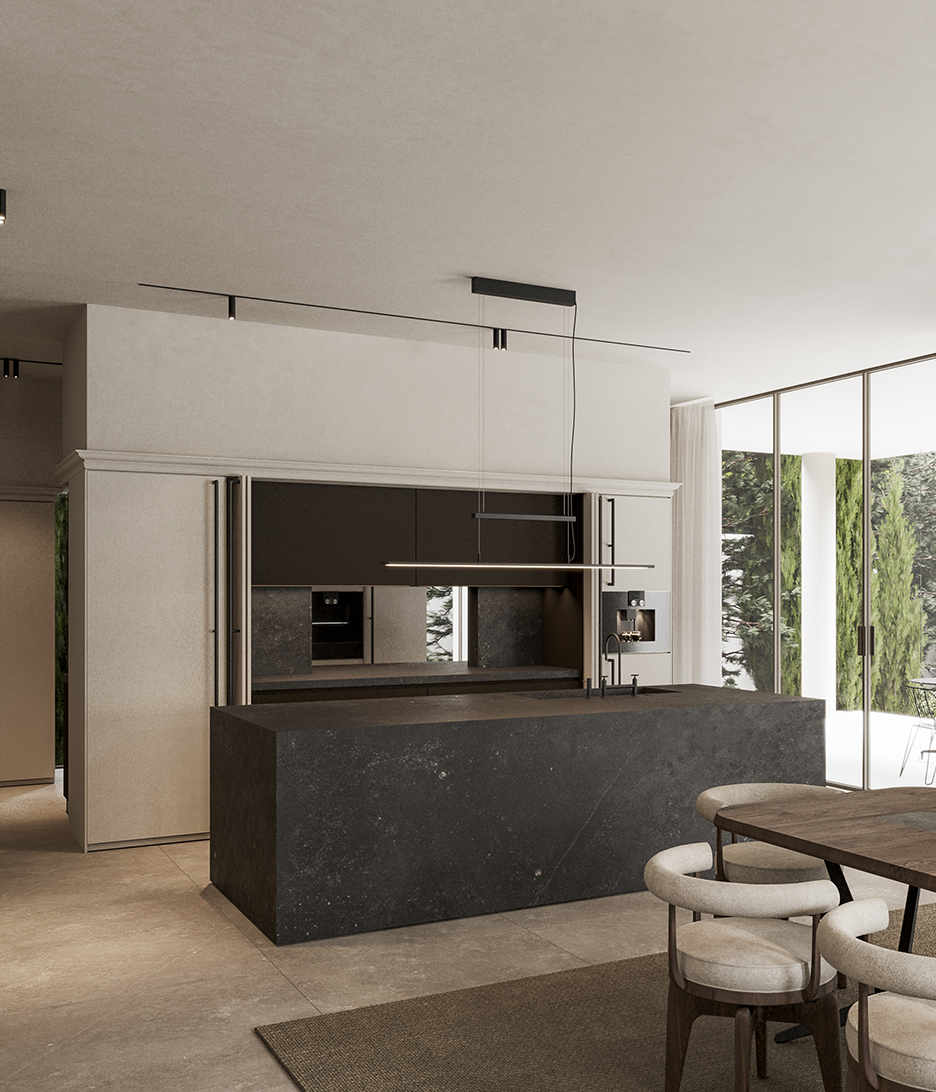
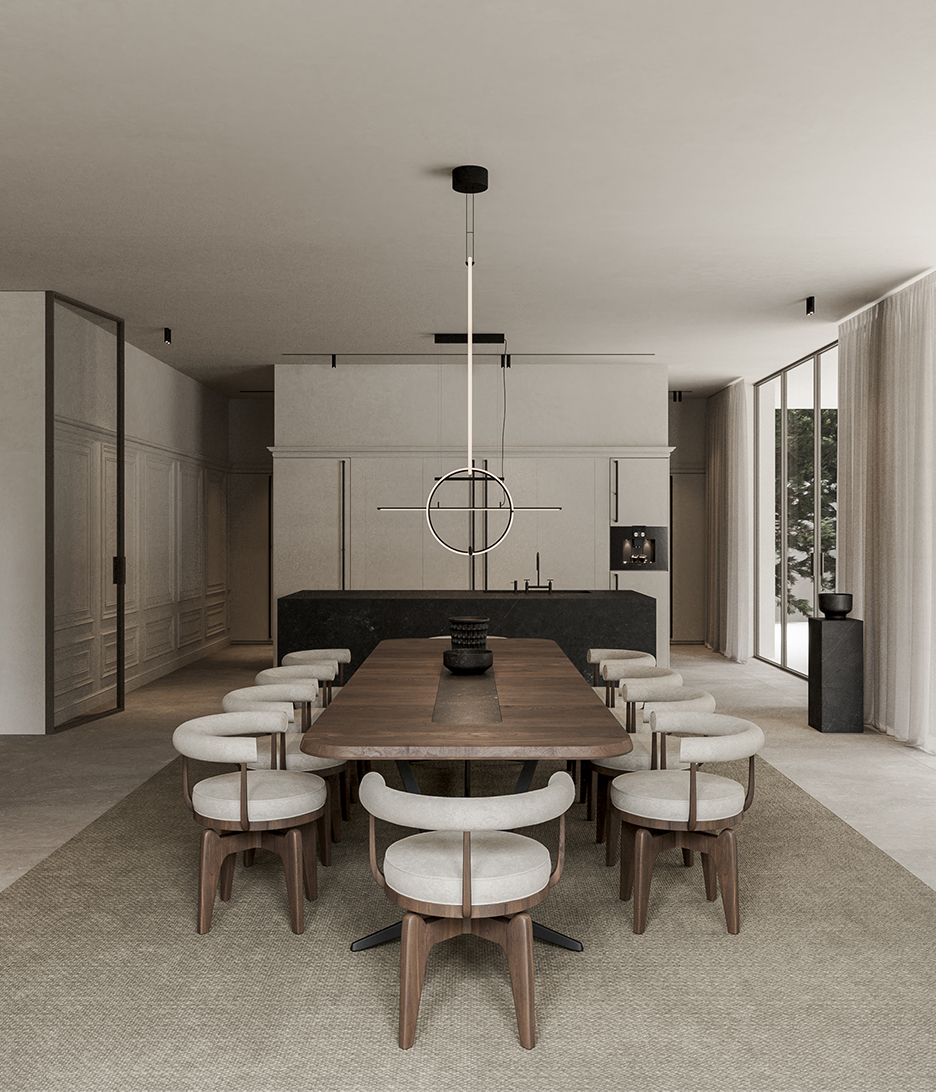


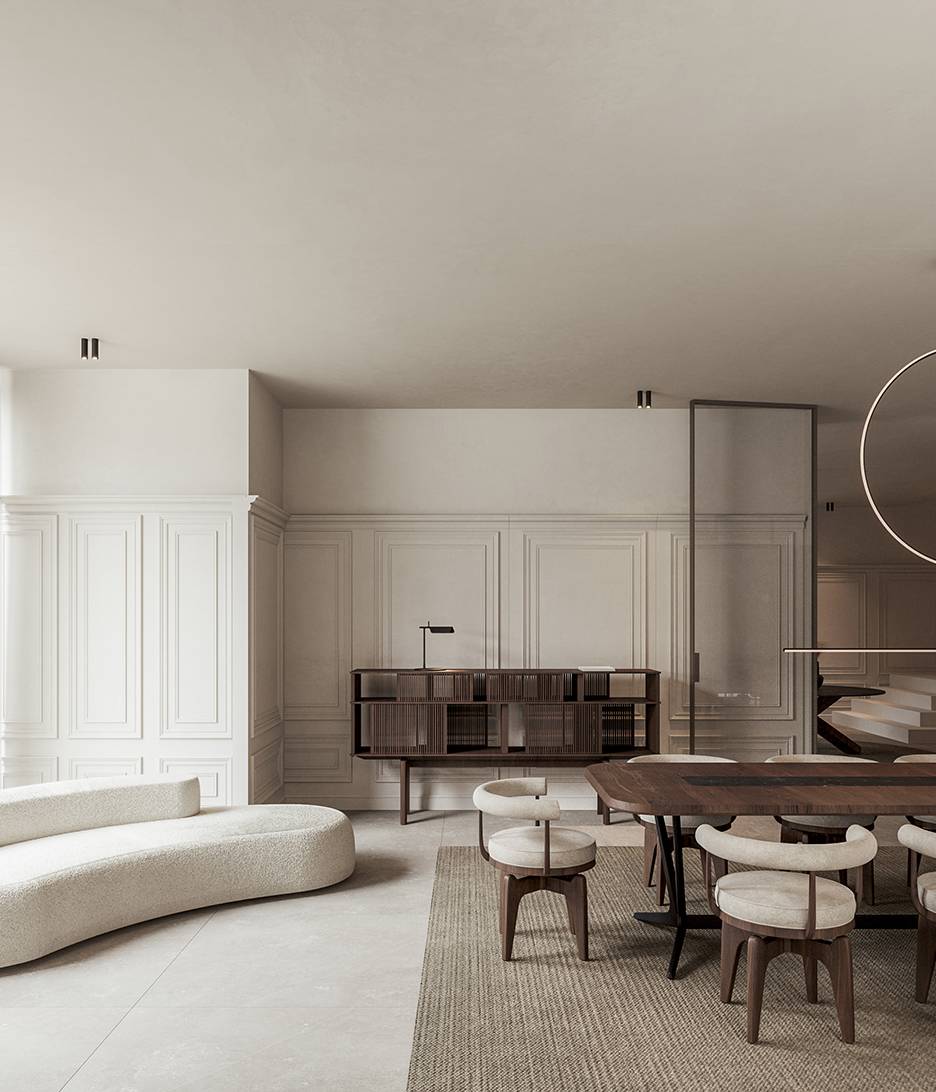
In the formal area of the house, we placed a small office. Thanks to the room’s formal stature, it becomes a quiet and private space, perfect for business meetings. One of the unique points of this office is that we can turn it into a guest’s room for sporadic use. The location of this room allows us to offer autonomy to the guests without compromising the privacy of the most social areas of the house.
Thanks to the sliding doors, we can completely close off this room or, if required, it can become a more private meeting space for a reduced number of guests.
The client highlighted in his requirements, the desire for a fireplace in the living area. This fireplace proposed is open on two sides and creates a direct flow free of obstacles towards the house’s garden. We have used this resource to camouflage the structural pillars that appeared in the middle of the room and distorted the clear vision of the space. In this way, we continue to develop logical pathways without compromising the spaces’ privacy or intrusiveness.
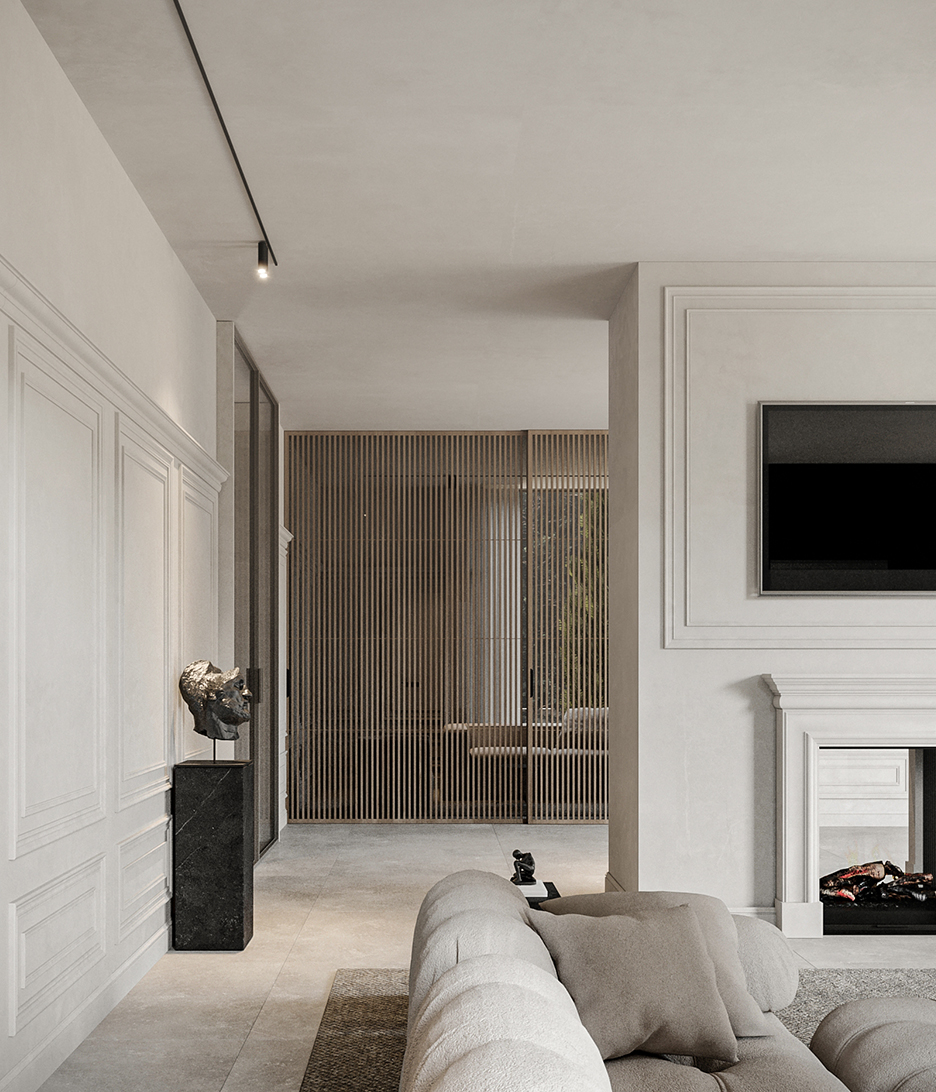
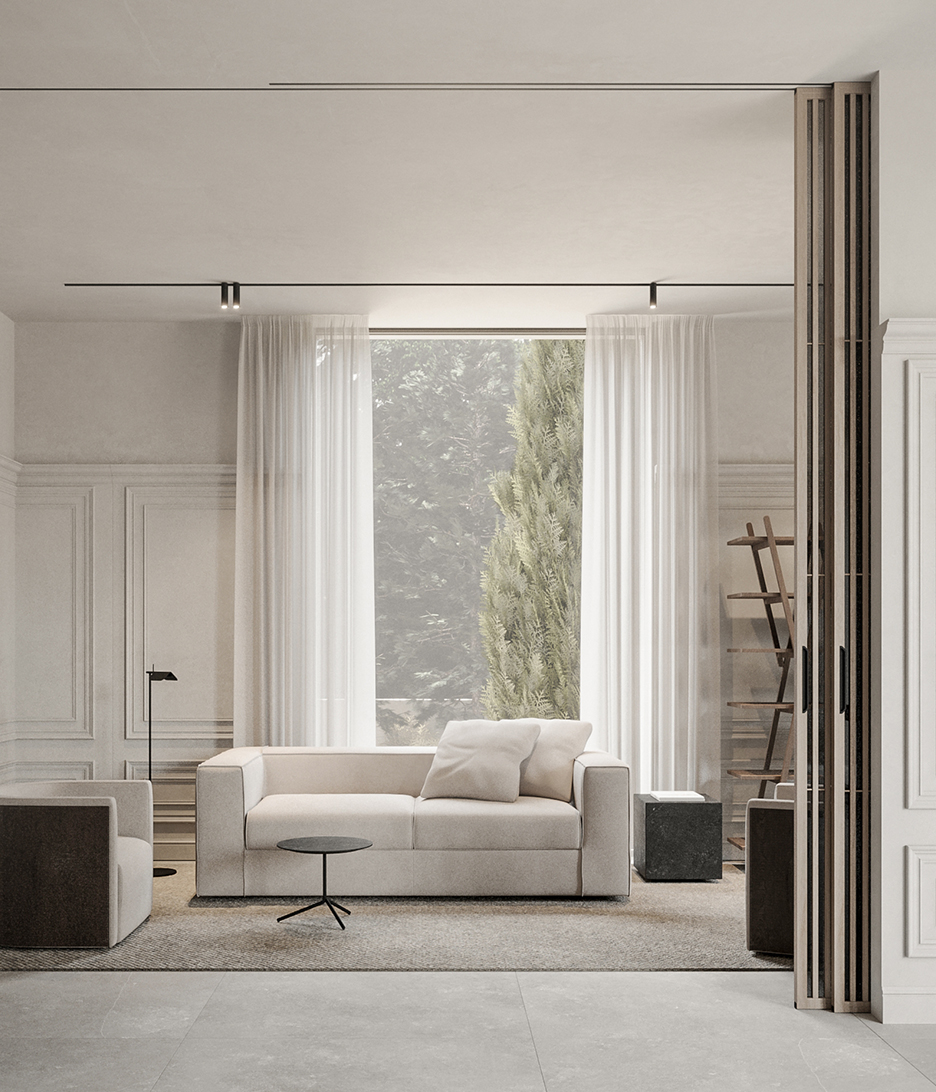


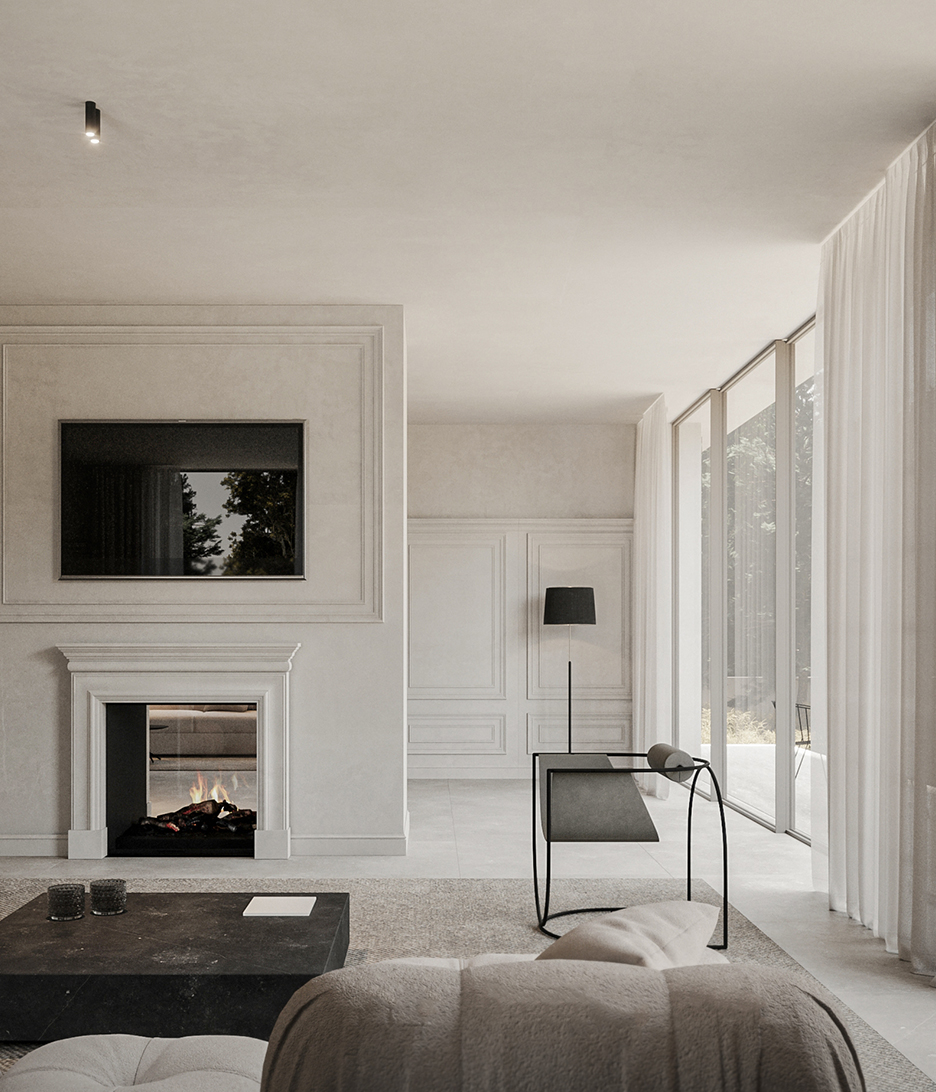
On our first attempt, we proposed a somewhat minimalist and contemporary style following our philosophy and vision that we would like to focus on our projects. However, our client wanted a project with a more classical style approach, with elements that break with such functional minimalism and was bereft of aesthetic details. Defining the interior design was complex since the client rejected our first proposal.
We did an exercise of inserting elements without compromising the functionality of the space and seeking a balance between our intentions and vision of interior design with the client’s requirements. A balance was sought between purely minimalist elements with some more classic and ornamental elements that would transform the space without confronting functionality or comfort.
We resorted to detail elements such as wall or ceiling paneling, capitoné, or rattan for some pieces of furniture and some velvet upholstery, which allowed us to maintain a balance between a minimalist space. The more classical pieces help us accentuate and emphasize the desired effect.
Maintaining a luminous and bright space was another request accommodated by the client. For this reason, we have resorted to large windows that let in natural light together with light materials, to preserve this bright environment.
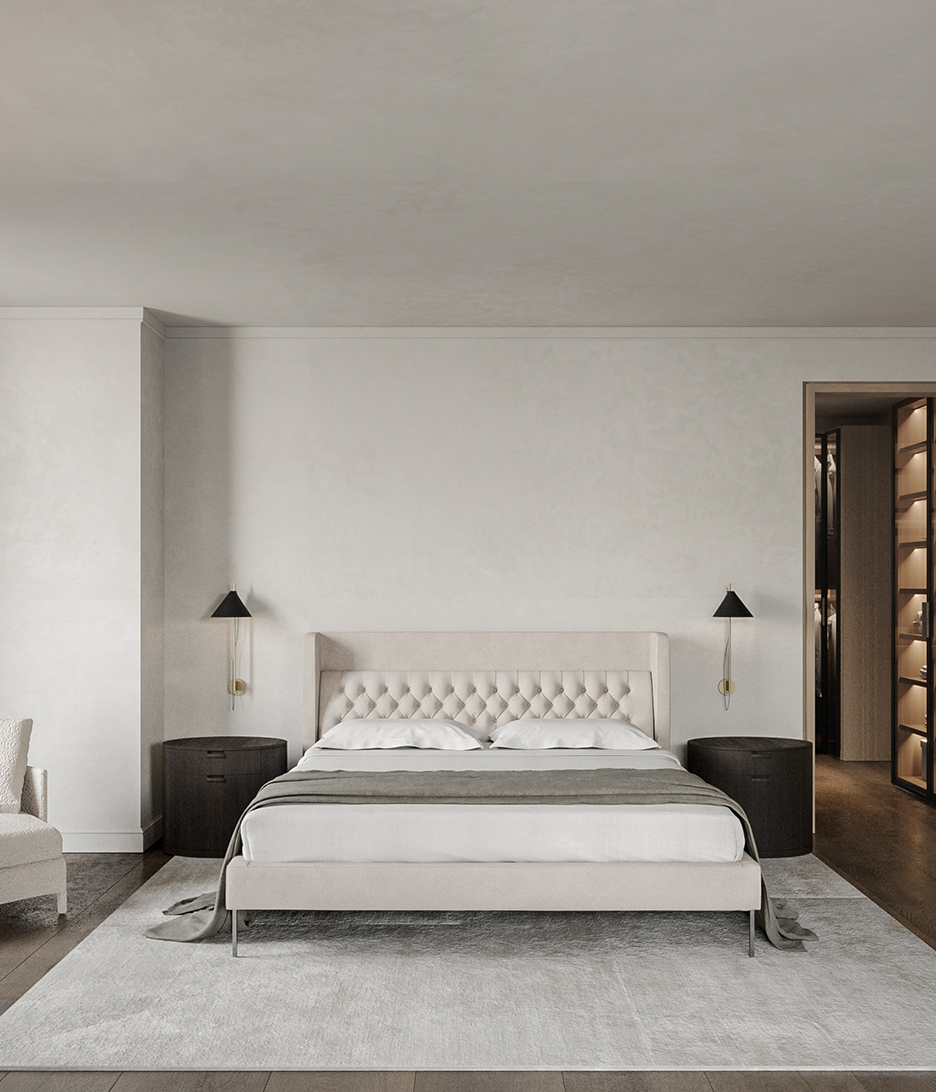
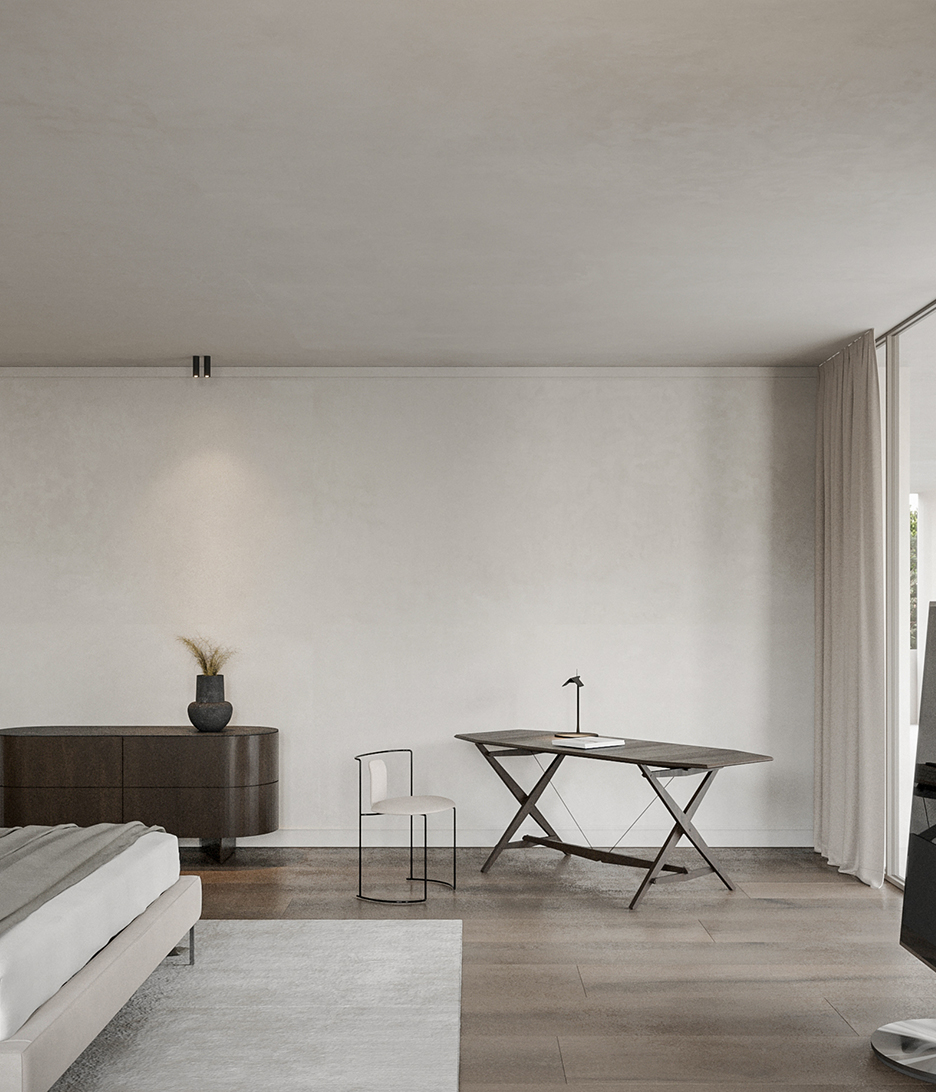


The second floor of the house is where all the bedrooms are located. The main staircase leaves us on a landing right in the center, where the four bedrooms are distributed. All rooms have a wardrobes area, desk, and a private bathroom. The master is larger than the others and occupies the best possible orientation, receiving direct natural light during most sunlight hours.
Each room has a terrace to establish comfort and contact with the outdoor environment.
We proposed that part of the distribution corridor reach the facade of the building, allowing us to transform the center of the house and the staircase into a brighter part of the house.
To increase the comfortable feel in the bedroom area, we planned the entire floor with natural oak wood flooring. This material gives us warmth and becomes the protagonist of this whole floor.
The pool next to the spa becomes a special area to use daily and escape from the city’s frenetic activity. It is an oasis and space for contemplation.
One of the unique aspects of this project is the indoor pool located on one of the sides of the garden and is separate from the main house. Our client’s requirement at the beginning of the project was decisive; of course, he wanted covered access from the home to the indoor pool.
The desire to connect these two spaces was considered while working on the basement distribution. We initially proposed the pool as a space for spa, relaxation and contemplation rather than a playful space or a space for a lot of activity. This way, we could set part of the basement as an integration of the pool and the experience before reaching it.
The spa experience begins as soon as you enter the basement, where we reach the locker room area through a door. From there, we can access a site with therapy showers, a massage area, a sauna, and a space for relaxation or contemplation.
We have a long corridor from this spa area at the same level, which leads us to a staircase that gives us interior access to the pool area.
On the basement floor, a family-oriented space has also been designed, consisting of a bar area next to a seating area, which is a mix between a family room and a home cinema.
Do you have any project in mind?
Let us know about your vision and we will take care of the expectations.
Get in touch with us
